Dior returns to Japan with a triumphant Pre-Fall 2025 collection that bridges heritage, modernity, and the poetry of movement.
By Fashion Editorial Staff
As twilight fell over Kyoto’s Toji Temple, sakura petals drifted on a breeze scented with cedar and stone. Beneath the five-story pagoda, Maria Grazia Chiuri unveiled the Dior Pre-Fall 2025 collection—as a quiet, more sacred and sensual ritual. A reverent conversation between past and present, between French couture and Japanese tradition.
This was not Dior stepping into Japan; this was Dior returning. In the 1950s, Christian Dior began weaving Japanese artistry into the house’s DNA—first with the Japanese Garden ensemble in 1953, then with luxurious Tatsumura silks in 1954, and later with silhouettes designed to embrace, not compete with, the kimono. Chiuri’s Kyoto showing felt like a homecoming seventy years in the making.
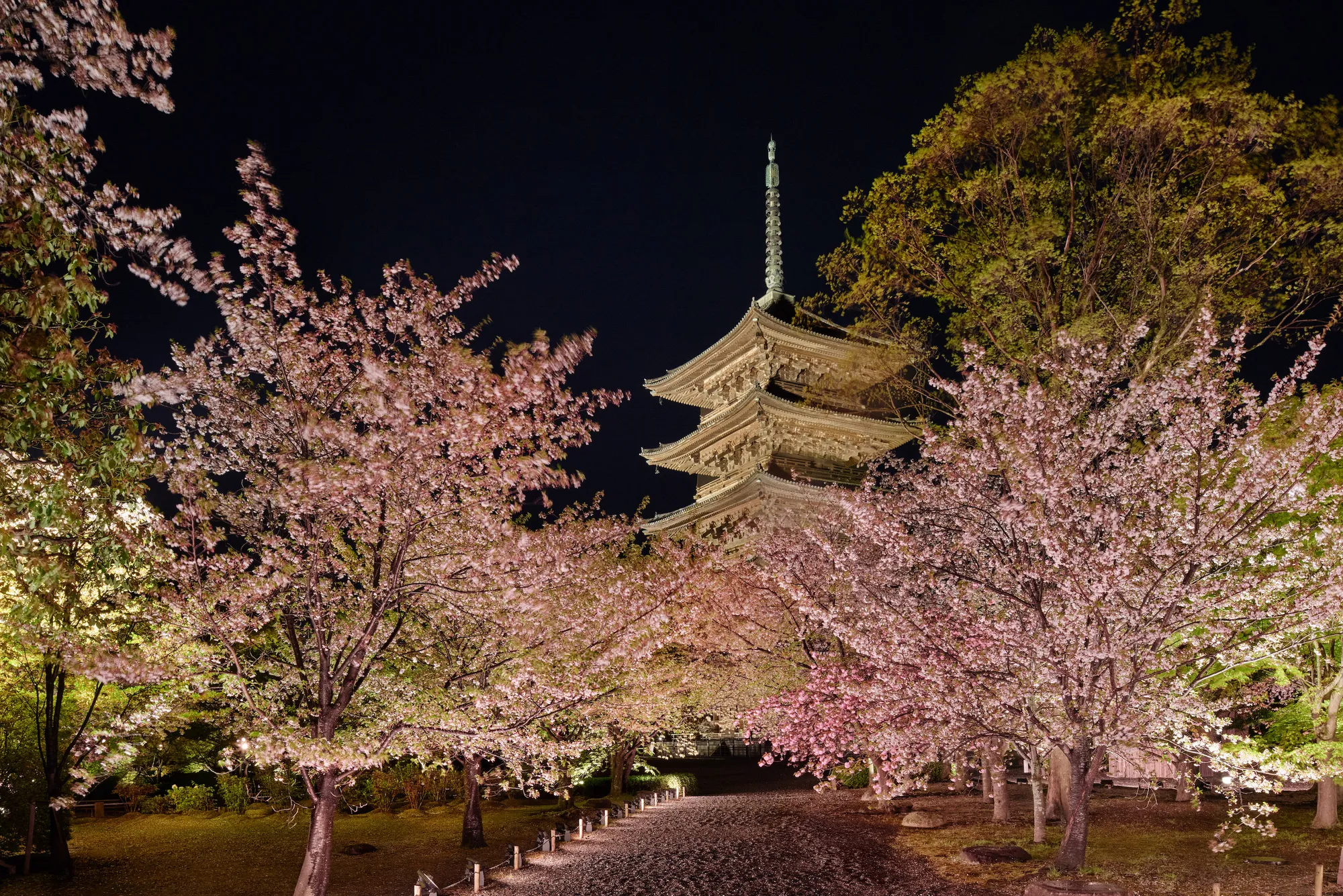
The collection unfolded with grace and intention. Models moved slowly across pebbled garden paths, their garments catching the golden light like brushstrokes on silk screens. Long, fluid coats and wide-legged trousers whispered with every step. Jackets wrapped the body with obi-inspired belts, not cinched so much as composed—an elegant nod to the kimono's essential geometry.
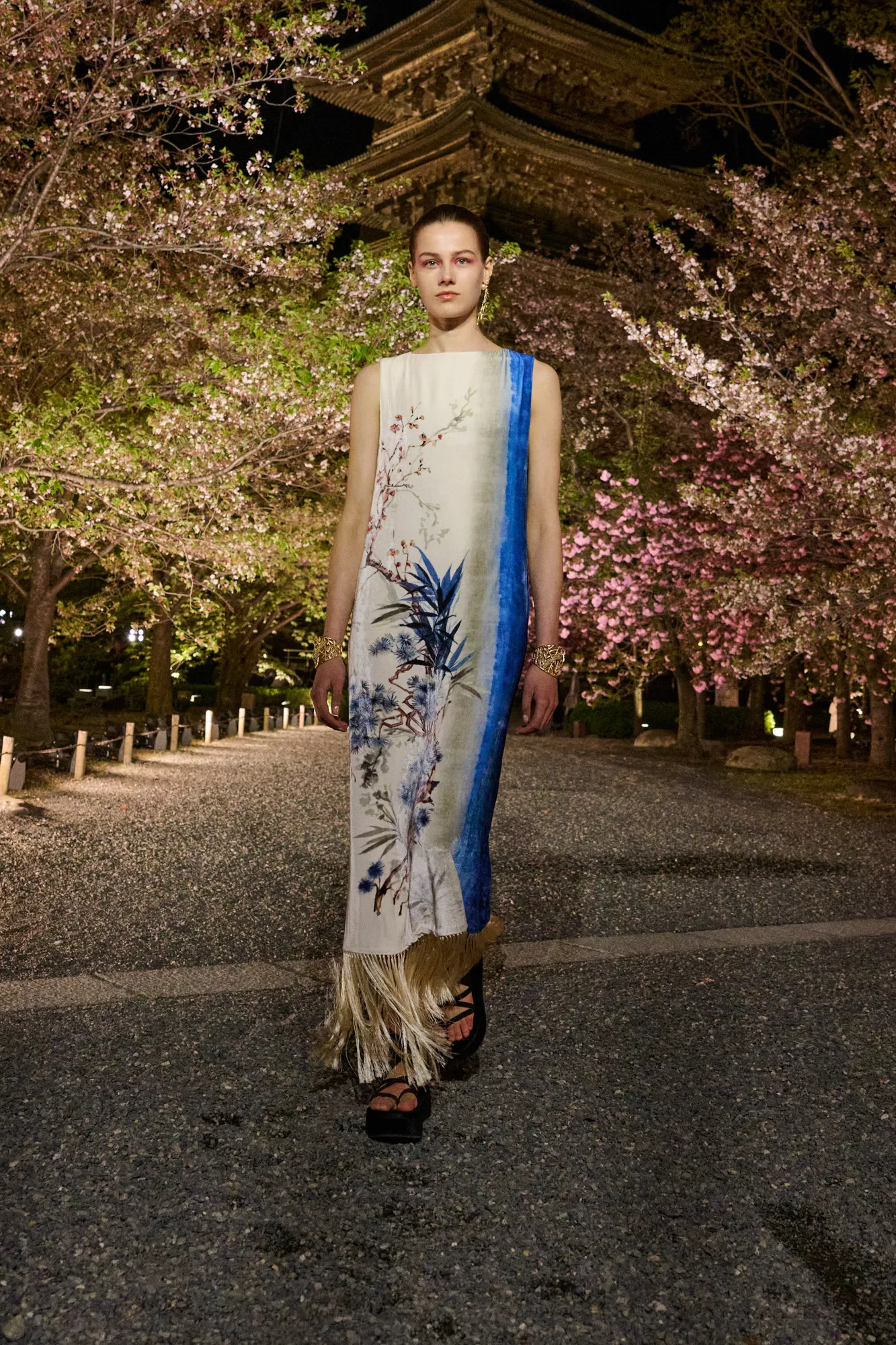
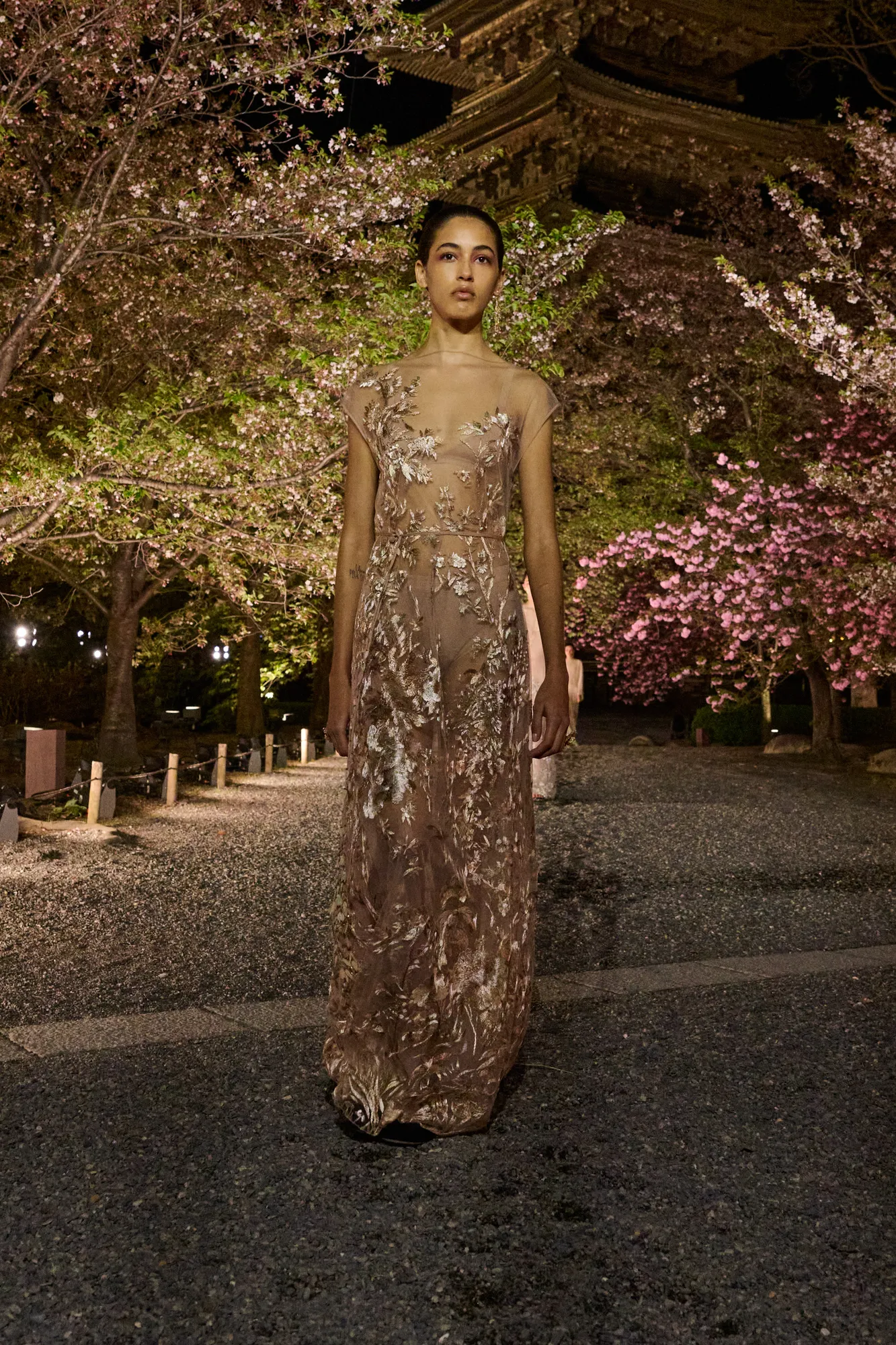
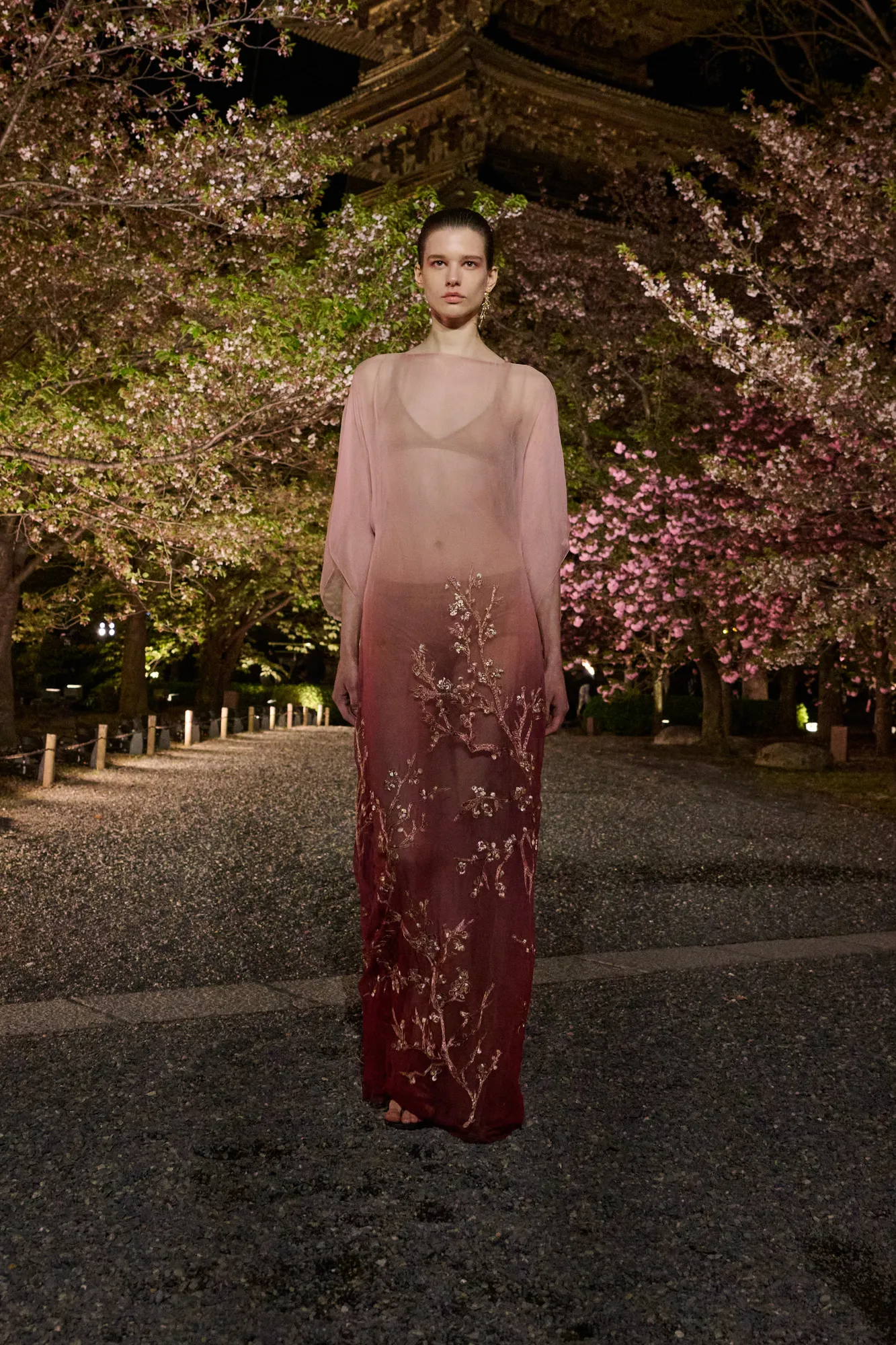
Gone were the heavily structured silhouettes of past seasons. In their place: pieces that breathed. Fabric moved like water. The tailoring—precise, yet undone—reflected a quiet confidence. These were clothes designed not to dominate space, but to exist within it, harmoniously.
The color story remained controlled and contemplative: deep blacks, midnight blues, earthy neutrals. Into this hush came flashes of modernity—silver-based fabrics developed with Kyoto’s famed Tatsumura Textile Company, their subtle gleam catching the light just enough to feel futuristic. “The silver fabrics were made less shiny to give them a more modern look,” said Iku Tatsumura, president of the century-old atelier. That balance—of heritage and evolution—defined the entire show.
But Chiuri wasn’t only looking back. There was an edge to the softness. Off-the-shoulder knits, cropped bomber jackets, oversized charcoal denim—these pieces grounded the ethereal in something recognizably now. Footwear echoed the same blend of old and new: tabi-inspired boots, platform sandals ribbon-laced like ceremonial wear, and delicate ballet flats that anchored the collection with quiet confidence.
The craftsmanship, as always, was immaculate. Collaborations with Kyoto’s master artisans—Tabata Kihachi and the Fukuda Craft Dyeing and Embroidery Research Institute—imbued the garments with memory. Gold-threaded embroidery shimmered like temple details; floral motifs became living prints. As the French maison describes, this was “a metamorphic collection where black remains intense and deep; where the fascinating narrative of floral motifs becomes a print in its own right; where a golden embroidered inlay expresses the marvelous desire that so often pervades fashion and its creators."
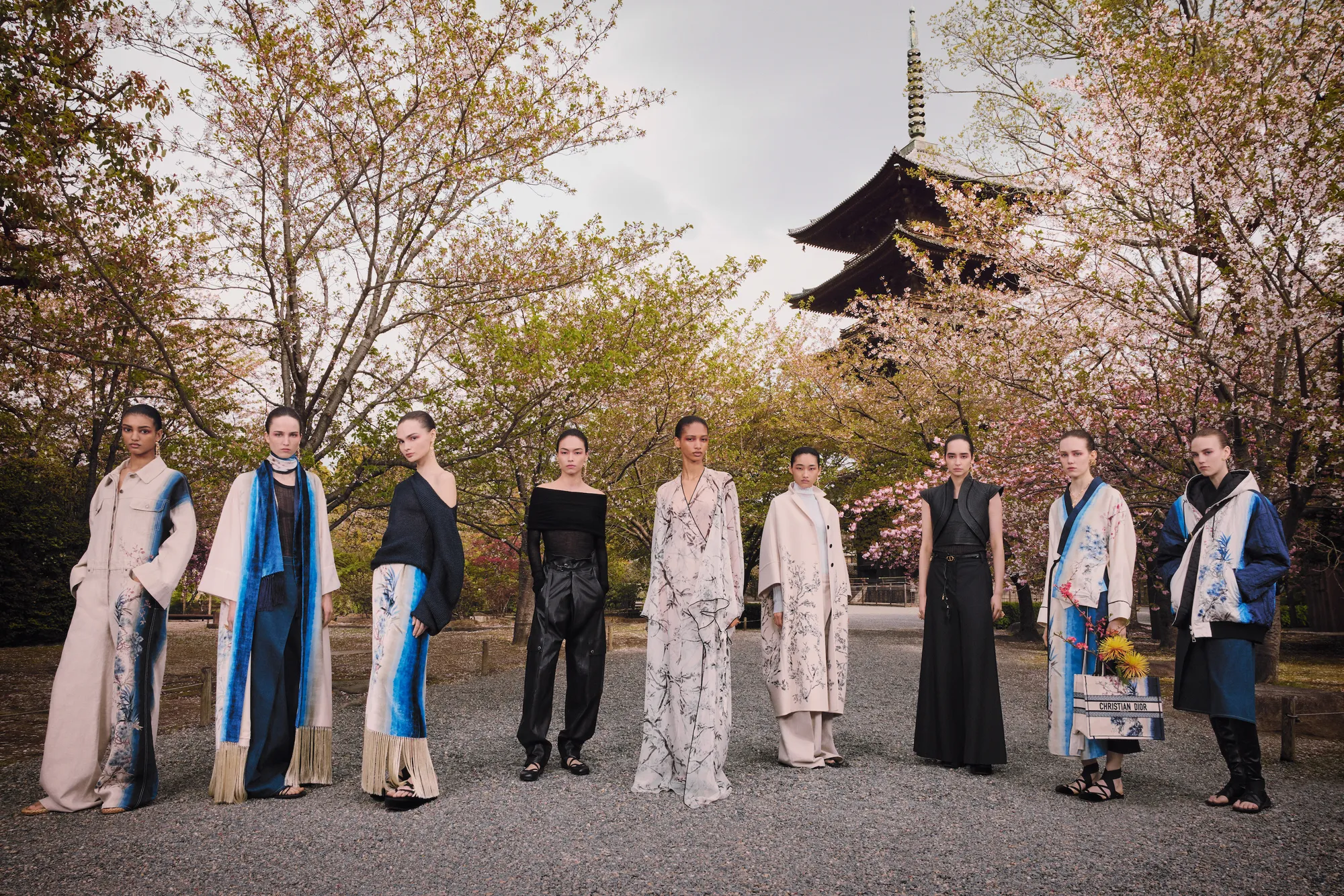
But Chiuri’s true focus wasn’t just fabric. It was form. Function. Feeling. “The body, bodies,” as noted by the fashion house, are at the heart of this work. These clothes move, flex, respond—architecture made intimate. They are made not only to be worn, but to be lived in.
And the moment—this meeting of place, memory, and meaning—was reflected in the audience, too. Lily James arrived in flowing Dior, her presence as soft as the petals in the air. Sophie Marceau, ever the French icon, exuded cinematic elegance. Elle Macpherson—tall, radiant, effortlessly regal—watched with quiet intensity. Bollywood icon Sonam Kapoor added a personal dimension to the event, having previously shared her deep connection to Japan. "Japan has always held a special place in my heart. I have fond memories of visiting Kyoto with my husband a few times after our wedding and we've met some amazing and warm people. This year, returning as the Dior ambassador makes this trip all the more special.”
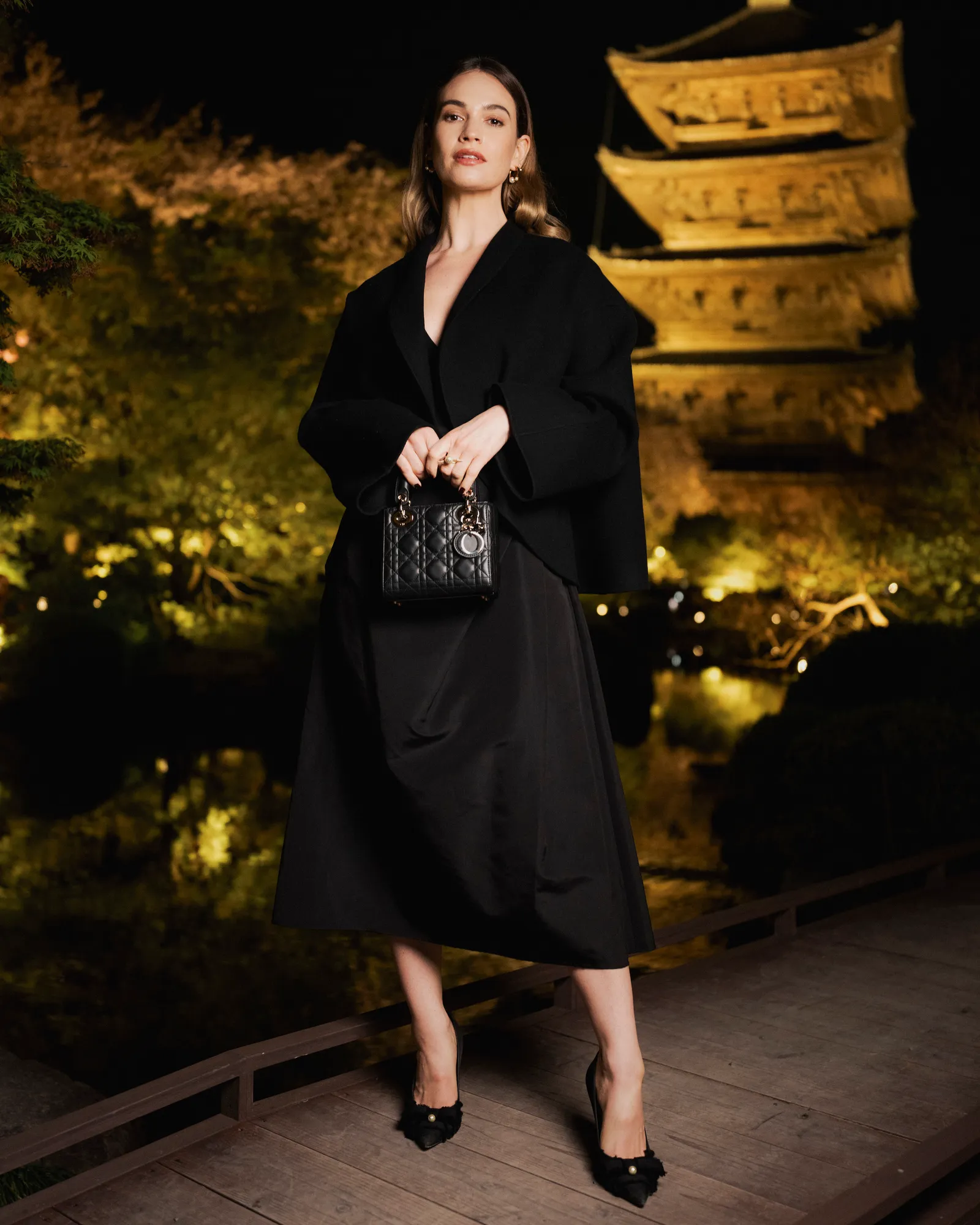
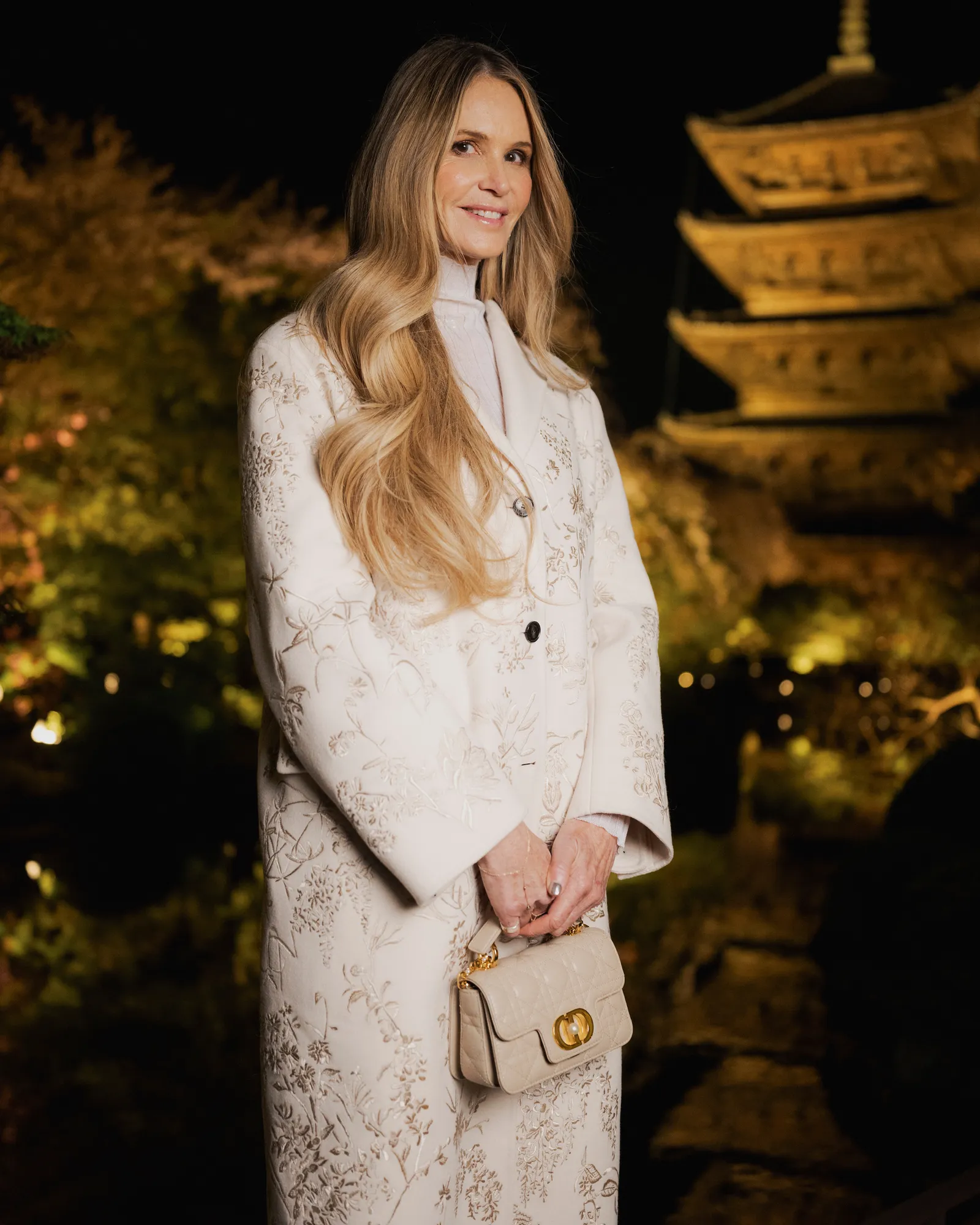
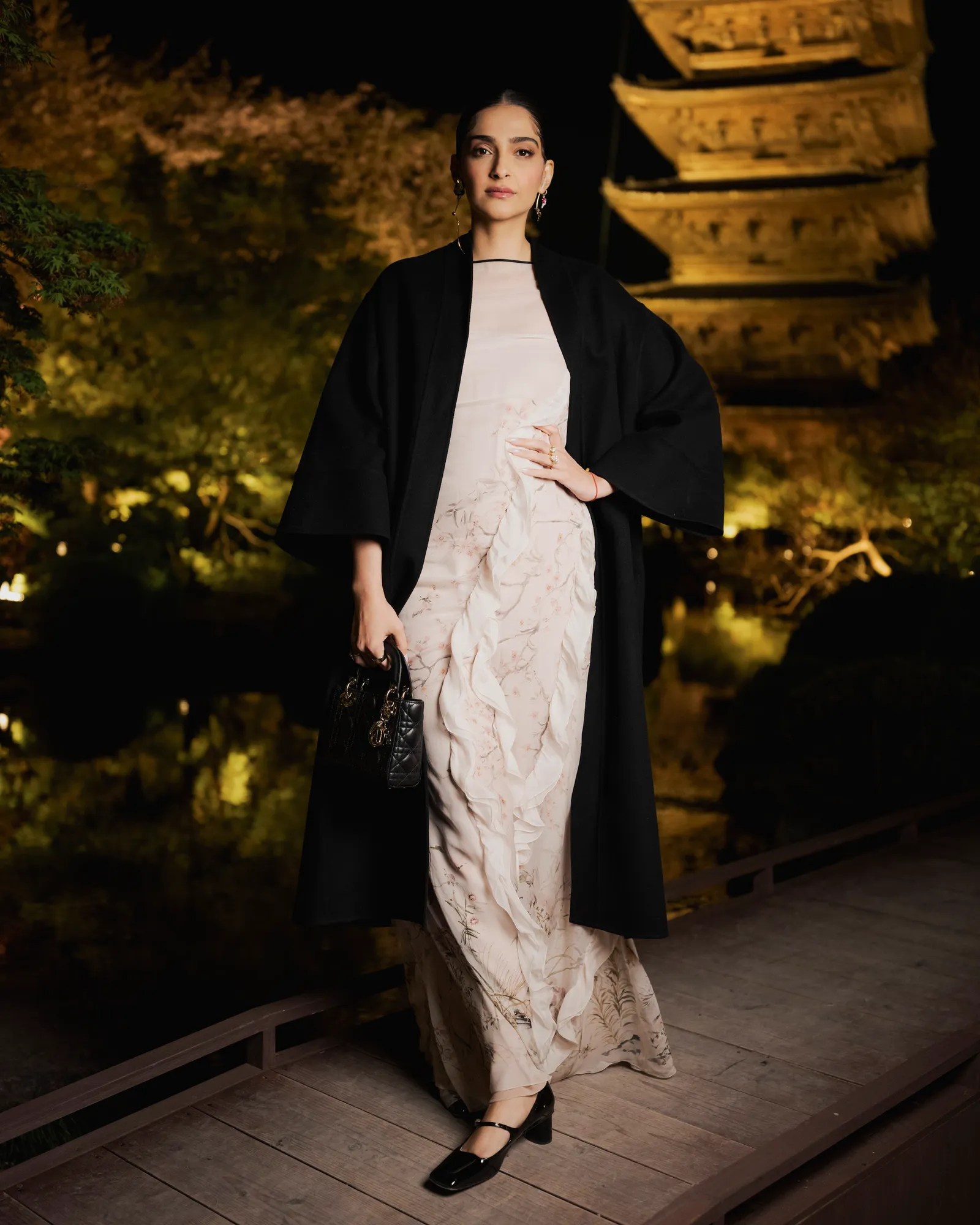
With Pre-Fall 2025, Maria Grazia Chiuri has presented more than a seasonal collection—she has reignited a long-standing dialogue between Dior and Japan, one rooted in mutual respect, shared artistry, and timeless design. Set against the serene majesty of Toji Temple, the collection honors tradition while speaking fluently to the present. It’s a confident, contemplative chapter in Dior’s global story—one that proves beauty is at its most powerful when it feels both deeply personal and universally understood.
-optimized-1744820196345.jpg)